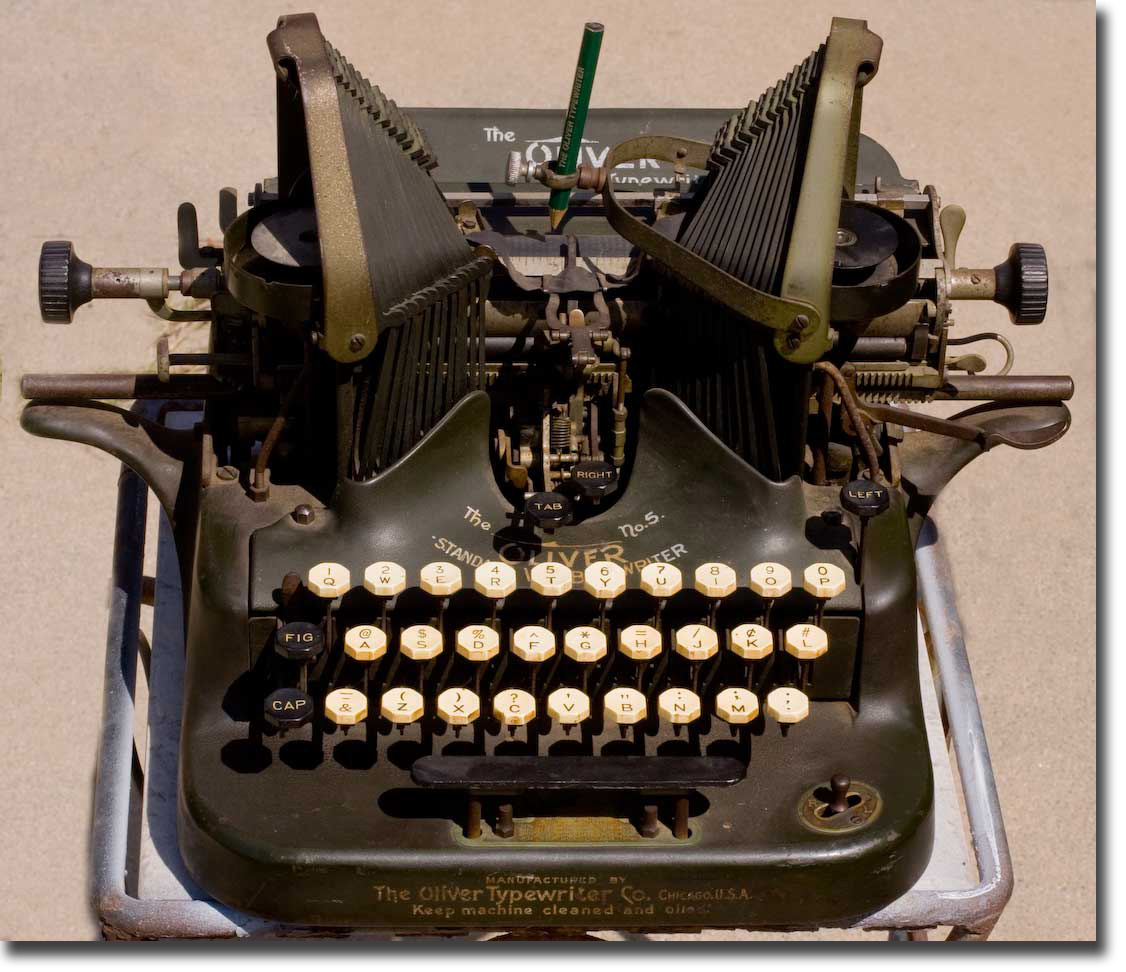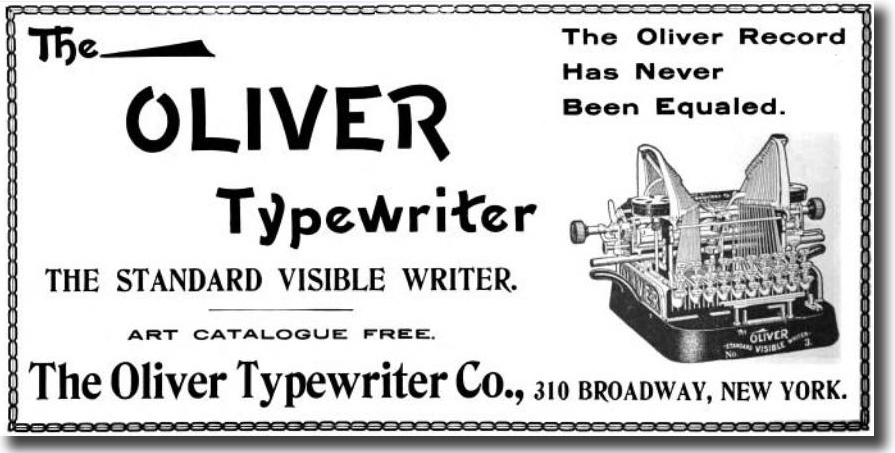Thomas Oliver began making typewriters in the late nineteenth century. At that time, the state of the art was to have the typebars strike the ribbon and paper from the bottom of the platen, which meant you couldn’t see what you typed until it rolled up into view. Oliver came up with a down-strike method: all those typebars were on the sides, and they swung down and struck the ribbon and paper from the front, so you could see what you just typed.
Oliver models are numbered from 1 to 12, in order of introduction (how’s that for a novel idea?) Beginning with their Model 3, the odd-numbered models are English-language versions; even-numbered models have a extra keys to support other languages like French or Spanish; so a Model 3 and 4 are identical save for the keys, etc.
The Model 9 (and 10) is the most common because it had the largest production run (449,000, according to Wikipedia). The Model 5 (and 6) is the second most common, at 311,000 copies. The Model 7 had just 57,000 examples, and others even fewer. If you see an Oliver for sale, it is very likely either a Model 5 or a 9.

The No. 5 was manufactured between 1907 and 1914, with my particular model being made in 1913 (probably, according to Typewriter Database’s serial number list).
My machine’s in pretty good fettle for a centenarian. All the pieces are there, including the tool that holds a pencil so you can scribe rules for tables or ledgers. It needs to be cleaned: I was able to do a bit but not as much as I would like. The platen is smooth and I can’t get it to feed paper, so I can only type a few characters before the paper is knocked askew. If I can get it to feed and hold the paper properly, I’ll buy a new ribbon and type up a proper print sample to show here.
The thing I really like about this machine is something I’ve never seen commented elsewhere: the octagonal keys. I can’t think of another machine with octagonal keys; they’re typically circular, square with rounded edges, or something akin to that. The Oliver is the only one I’ve seen with octagonals. I don’t know why, but I like octagons. Schoolhouse clocks, old cowboy rifle barrels, you name it. Except for STOP signs, octagons are always good.


